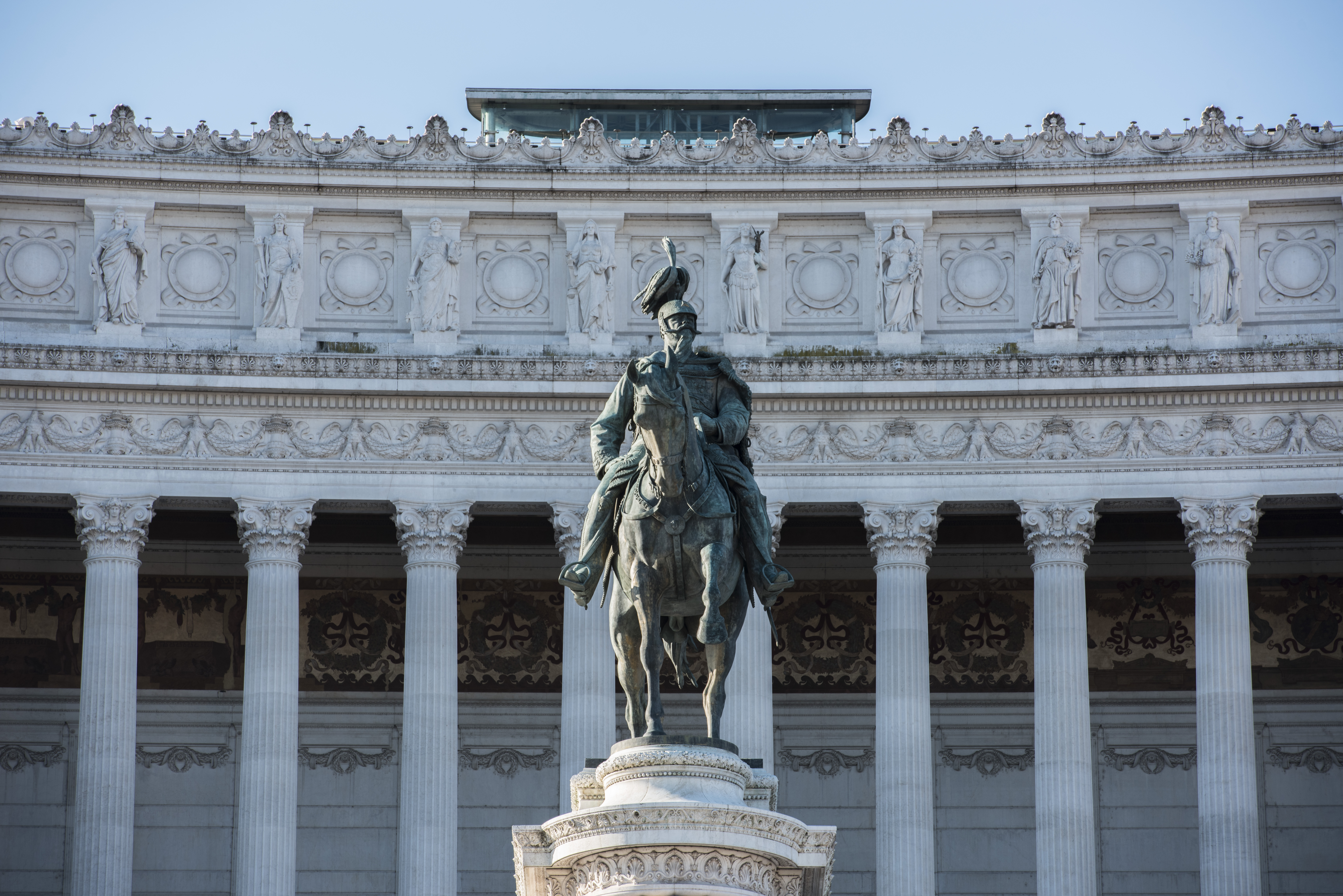The Main Colonnade features an elaborate, lavish decorative scheme, from the gilded stucco ceiling to the paintings on the back wall and the floor made of marble intarsia.
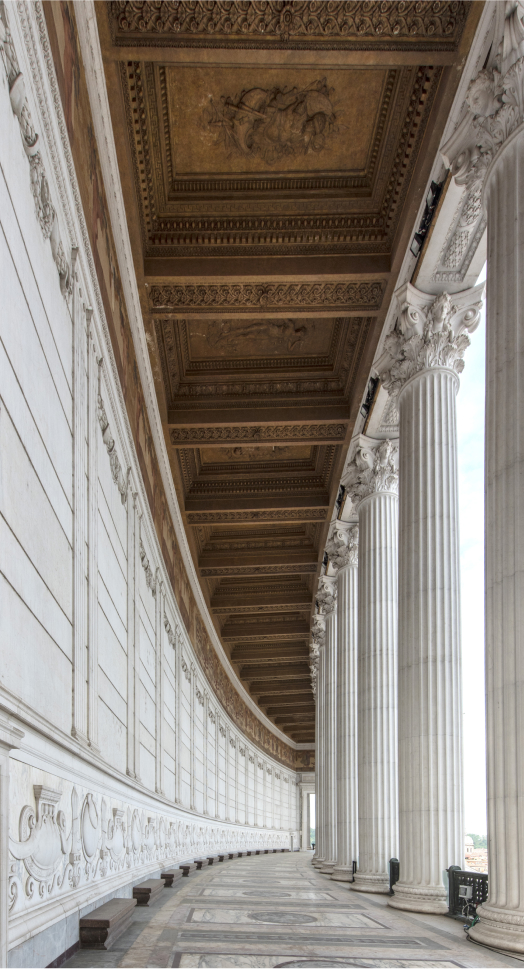
The colonnade, located almost at the top of the Vittoriano, is 70 metres long. The sixteen columns symbolise the regions of Italy in the second half of the nineteenth century, when many areas of the north-east had not yet become part of the national territory. 15 metres high, they end with a capital decorated in the centre by a female head with a turreted crown depicting Italy.
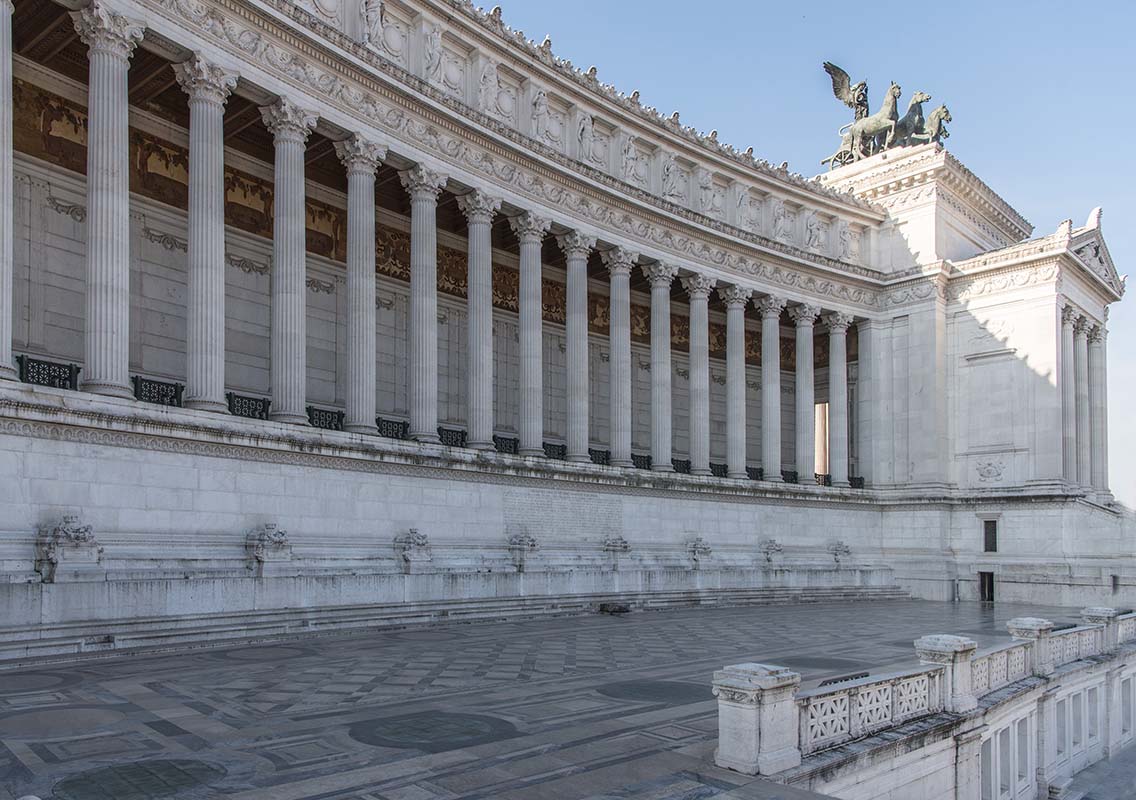
The ceiling and floor of the portico were designed by Gaetano Koch (1849-1910) in 1907. The ceiling was made between 1908 and 1910 in gilded stucco by Giuseppe Tonnini (1875-1954) from the region of Le Marche. It is divided into seventeen coffers, nine with Trophies of Arms, eight with the New Sciences: Geometry, Chemistry, Physics, Mineralogy, Mechanics, Medicine, Astronomy and Geography.
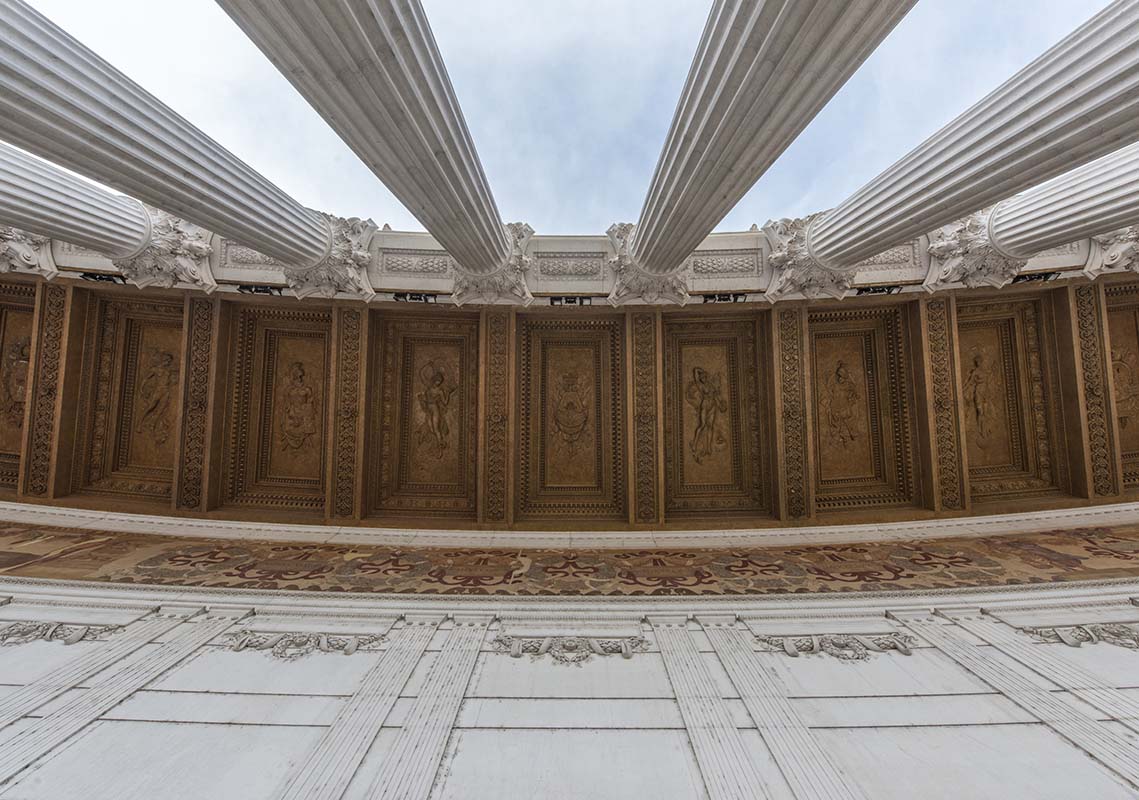
The tempera-on-gold decoration on the back wall, 3.5 metres high, is the work of Primo Panciroli (1875-1946), Silvio Galimberti (1869-1956) and Carlo La Spina: plaques with the most significant dates of the Risorgimento dominate in the centre: 1848 in memory of the revolutionary uprisings, 1859 of the Second War of Independence, 1860 of the Unification and 1870 of Roma Capitale.
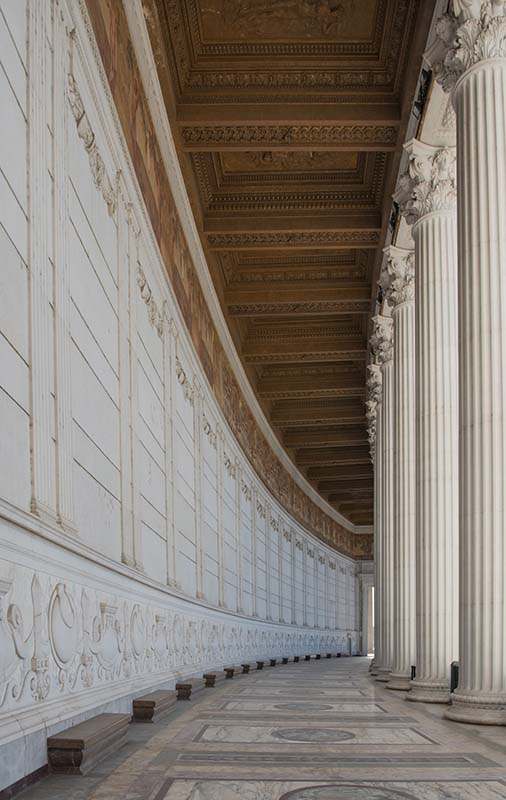
A frieze with eagles with open wings designed by Sacconi and made by Eugenio Maccagnani (1852-1930) runs above the colonnade. The attic is decorated with the personifications of sixteen Italian regions made by as many sculptors between 1909 and 1910.
